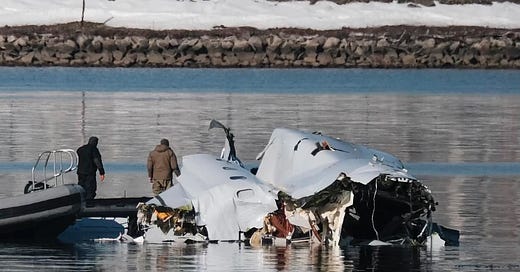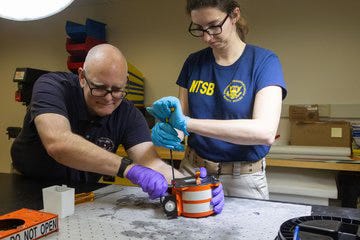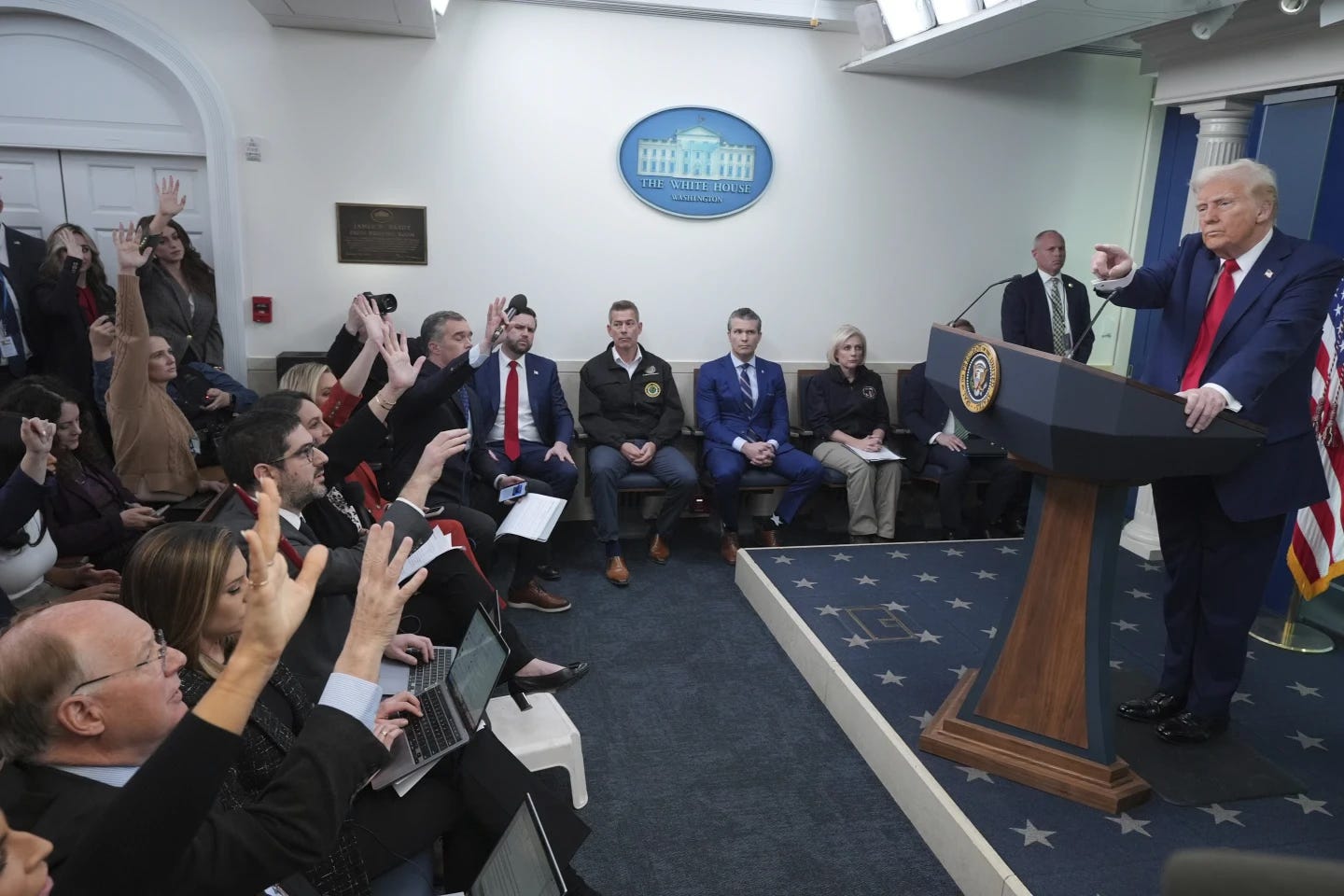
There is rarely one single factor that causes a major aviation accident. In the deadly midair collision over Washington D.C.’s Potomac River we already know that to be true. The investigation remains in its early stages, and we already know a few facts. Many more will be revealed in the coming weeks.
What we know, according to statements by Federal officials, is that the US Army Blackhawk helicopter was in airspace it was not supposed to be in. It then flew into the American Airlines CRJ commuter jet that was on final approach to National Airport. All 67 people on both aircraft perished.
While all the black boxes have been recovered and are being, “read-out,” and air controllers are being interviewed, the publicly available radio calls and statements about where each aircraft was before the collision gives us a sense of what may have happened.
The source for some of this information is the President of the United States and his new Defense Secretary. While giving some details about the helicopter, the President betrayed a long standing tradition of not speculating after a crash before investigators have reached a conclusion. The Wall Street Journal, in a news story, not an opinion piece, said the President was, “deflecting blame and attacking Democrats, the media and his predecessors,” for the crash. Politics has no place in investigations like these.
In the early 1980s I covered my first plane crash. Two small private planes collided over brush land outside of Boise, Idaho. Reporting on the deadly crash introduced me to the National Transportation Safety Board. This is a remarkable government agency. Its board members are bipartisan and deal in facts, not politics. Not speculation. Not opinion. Not influence. Just the facts that will lead to recommendations by the Board to hopefully prevent that type of accident from happening again.
I have said for decades the NTSB reminds me a lot of the world of journalism. The Board is always seeking the truth of what happened. They may not learn that truth on the first day or the 30th day, but with time the truth usually reveals itself.
With that said, there was a picture of the President’s briefing that was uncomfortable. The chairwoman of the NTSB was sitting on the side of the room as the President revealed some facts (which the Board guards tightly), and then opinions on the cause of the crash. Let’s just deal with the facts.
Washington D.C. is a busy airspace. There are a lot of jets coming into National Airport, and a lot of helicopters (mostly government) flying in the same area. There are highways in the sky for those helicopters. These are specific corridors along the Potomac River where the helicopters can fly. The choppers must stay at low altitudes, usually less than 200 feet above the water.
It was a little after 8:40 pm Wednesday night when the AA jet was approved to land at National airport by crossing the Potomac from east to west and landing. With that approval, the tower then told the Army helicopter (identified as PAT 2-5) flying from north to south that the commuter jet would be landing and asking the soldiers if they could see the jet. The chopper responds that they do see the jet and, requested visual separation. That is the helicopter asking that it be empowered to keep away from the other aircraft. The request was granted by the tower.
Condensed air traffic control conversations before the crash between tower and the Army Blackhawk helicopter. (Credit: LiveATC.Net)
A minute and a half later, for the second time, the controller asks the helicopter if it sees the CRJ jet, and then asks the chopper to “pass behind” the small jetliner. Again, the helicopter responds to the tower that it sees the jet and again requests visual separation. The tower again grants the request. Just 12 seconds later an open microphone in the tower captures an “oh my,” as the two aircraft collide over the Potomac.
This suggests that the Army pilots may not have been looking at the right jet. Rather than seeing the AA CRJ, it is possible they were looking at the jet behind it that was also lining up to land at the airport. During busy times at National one can see a line of planes, separated by a mile or more, making their way to the runway.
The Defense Secretary said this was an annual routine “continuity of government” training flight. That means it was a check-out flight to expose the crew to the rules around Washington during night operations. The continuity of government element refers to flying government officials in or out of Washington during critical events. They are called Priority Air Transport flights, also known as a PAT.
Hegseth also said the three person crew was carrying night vision goggles. While those goggles help in low light, they do narrow one’s field of vision. It is unclear if they were being used.
So, from the air traffic control tapes it appears the helicopter did not see the correct jet in front of it. But, if the helicopter had been at the right altitude, it would have flown under the CRJ. Too close for comfort, but it would likely have been a near collision instead of a deadly midair.
If the President is correct, we know the helicopter was flying too high. He said the helicopter was at nearly 400 feet in altitude rather than below the required 200 foot ceiling in that corridor. “A mistake was made… there was some sort of elevation issue,” Pete Hegseth said. The President went further in a second contact with reporters, saying the helicopter was at nearly twice its expected altitude. Reports from FAA sources suggest the chopper was between 350-400 feet.
There has been a lot of discussion about FAA and air traffic control staffing. The FAA has admitted for years it is understaffed and has been trying to increase the controller ranks. Just last year Congress voted to add more flights to the already congested National Airport. Most members of Congress fly in and out of National.
There are reports that two people were doing the job of four in the tower at the time of the incident. But that is allowed with supervisor approval. Controllers and the FAA will be part of the investigation and could be factors in this crash. But as of this writing we know that the controller asked the helicopter twice if it saw the AA jet and both times the military pilots said, yes, and requested clearance to be responsible for staying away from the jetliner. All that while flying in airspace the Blackhawk was not supposed to be in.
NTSB Update- In its latest briefing investigators revealed data shows the CRJ jet was at 325 feet (plus or minus 25 feet). That would suggest the helicopter was flying at least 100 feet above its ceiling. The helicopter blackbox will provide data when is it downloaded. The box suffered water intrusion. Investigators say the CRJ pilots had a verbal reaction and the nose of the jet moved slightly up just one second before the sound of the collision. The NTSB also says the radar in the control tower showed the helicopter at 200 feet. Radar is less precise than flight data recorders. This suggests the controller, who warned the helicopter twice, may have thought if the aircraft did get close, the chopper would pass below the jet. NTSB also revealed that a PAT flight the day before led to a Republic jet calling off a landing and going around when it received a possible collision alert.
There is much more to learn here about this accident and preventing another like it. We will know much more after the NTSB gathers all the facts and does its work.









200’, 400’… almost doesn’t matter in aviation. The reality is attempting to split hairs like altitude like this is “in the noise” of normal altimeter operation. The ultimate question is how a random set of reasonably possible circumstances can lead to this mishap. Nothing is perfect. And, if reasonable imperfection—i.e. people make mistakes—causes a mishap, that’s not any person’s fault. I’m saying this because I personally take exception at any narrative that easily leads to a particular individual was at fault. Narratives that say, “the helicopter was at 400’ vs 200’ suggests the operator was at fault… (no other questions to ask.) I know you didn’t say that explicitly—ie the operator was at fault. But, the word structure allows that view. A better approach should be simply “they collided”—obviously they were at the same attitude, whatever it was. Who knows what the attitude really was and does it matter. In my view the only thing that matters is how such operations could be allowed that even if people were minimally good enough, this still happened. That’s the real question.
No surprise... This is the best breakdown of what may have happened
Thanks David